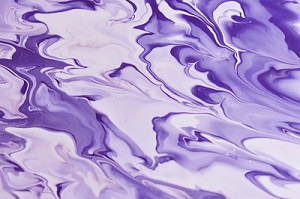What is Reactive Dyeing in Fabric

Reactive dyeing is a meticulous fabric dyeing process. It employs reactive dyes to impart vibrant and long-lasting colors to the fabric. Reactive dyes are a type of synthetic dye that undergo a chemical reaction with the fibers of the fabric, resulting in a robust covalent bond. This bond ensures that the color remains steadfast in following exposures.
Resists fading or washing out easily, even after repeated use and laundering.
How This Process Transforms Fabric
The reactive dyeing process commences with the treatment of the fabric using a solution containing a reactive dye and a chemical fixative. This solution carefully immerses the fabric, enabling the reactive dye to chemically bond with the fibers. The presence of the fixative aids in enhancing the permanence of the dye on the fabric. Subsequently, the fabric undergoes a thorough washing stage to eliminate any excess dye and fixative. This ensures a clean and finished appearance. The dyeing process concludes with rinsing the fabric to eliminate any residual dye and fixative. It is then dried to finalize the dyeing process.
Advantages of Reactive Dyeing for Natural Fibers: Vibrant Colors, Environmental Benefits, and Safety Considerations
Its capacity to produce vibrant and enduring colors makes reactive dyeing particularly favored for dyeing natural fibers like cotton, linen, and silk. The process ensures that the colors permeate the fabric deeply, resulting in rich and saturated shades. Moreover, reactive dyeing is regarded as an environmentally friendly option. It requires less water and energy compared to other dyeing techniques, thus reducing its ecological impact. Furthermore, reactive dyes themselves exhibit a lower toxicity level and are safer to handle and use compared to other synthetic dyes, making them a preferable choice for both manufacturers and consumers concerned about environmental and health considerations.
FAQ
What is reactive dyeing in textiles?
The textile industry utilizes reactive dyeing as a method to color natural fiber fabrics such as cotton, linen, and rayon. Reactive dyes chemically bond with the fibers to create vibrant and colorfast results.
How does reactive dyeing work?
Reactive dyes form a covalent bond with the fibers of the fabric. This occurs through a chemical reaction between the dye and the hydroxyl or amine groups present in the fibers. It forms a permanent attachment, resulting in excellent color retention and wash-fastness.
What are the advantages of reactive dyeing?
- Vibrant Colors: Reactive dyes provide fabrics with bright and vivid colors.
- Colorfastness: They create colors that resist fading during washing and exposure to light.
- Bonding: The dye forms strong chemical bonds with the fibers, resulting in excellent wash-fastness.
- Compatibility: Manufacturers primarily use reactive dyes for natural fibers like cotton, linen, and rayon due to their strong compatibility with these materials.
Can reactive dyeing be used on synthetic fibers?
Reactive dyes are predominantly designed for use with natural fibers. While there are some versions suitable for certain synthetic fibers like nylon, their primary application and effectiveness lie with natural fibers due to the chemical reaction these dyes form with the fibers.
How is reactive dyeing different from other dyeing methods?
Unlike direct dyes or vat dyes, reactive dyes chemically bind to the fabric fibers. This chemical reaction results in superior colorfastness and excellent wash-fastness compared to some other dye types.
Is reactive dyeing eco-friendly?
While reactive dyeing provides excellent colorfastness and bright colors, the process involves chemicals that can impact the environment if not managed properly. The industry is making efforts to develop and utilize more environmentally friendly reactive dyes while improving the dyeing process to minimize environmental impact.
Can all fabrics be reactive dyed?
Reactive dyes work best on natural fibers like cotton, linen, and rayon, as they chemically bond with the hydroxyl and amine groups present in these fibers. Synthetic fibers may require different types of dyes designed for their specific chemical composition.
How to maintain fabrics dyed with reactive dyes?
Fabrics dyed with reactive dyes generally maintain their color well, especially with proper care. Follow the washing instructions on the garment’s label to maintain the color vibrancy and longevity of the dye.Washing in cool water and avoiding harsh chemicals or excessive agitation can help preserve the colors.
Reactive dyeing is a significant method in the textile industry, providing fabrics with vibrant, long-lasting colors through a chemical bonding process between the dye and the fabric fibers.
HOW ABOUT FINISHING GARMENT IN REACTIVE DYEING
In reactive dyeing, finishing garments involves several steps to ensure the colorfastness and overall quality of the dyed fabric:
Washing and Rinsing:
After the dyeing process, the garments go through multiple washes and rinses to remove excess dye and any unreacted dye particles. This step helps in preventing color bleeding and ensures the color remains vibrant.
Fixation:
Fixation involves treating the dyed fabric with chemicals or heat to ensure the reactive dye molecules form a permanent bond with the fibers. This step enhances colorfastness, preventing the dye from easily fading during washing or exposure to light.
Neutralization and Washing:
The fabric is then neutralized to remove any remaining chemicals and balance the pH level. Further washing ensures the removal of any residual chemicals or impurities, ensuring the fabric is clean and ready for use.
Drying and Finishing:
The final step involves drying the fabric thoroughly. Once dried, the garments might undergo additional finishing processes, such as pressing or steaming, to achieve the desired texture, appearance, and feel.
The finishing stage in reactive dyeing is crucial to ensure the color adheres well to the fabric, maintaining its vibrancy and longevity throughout the garment’s lifespan.
